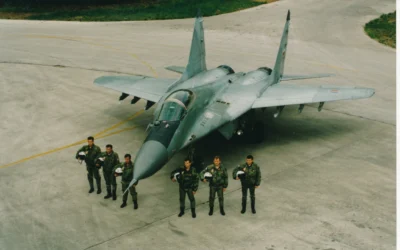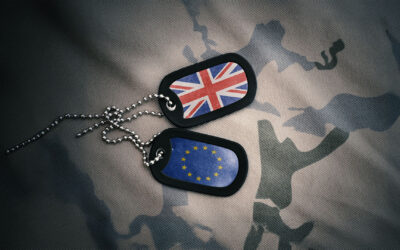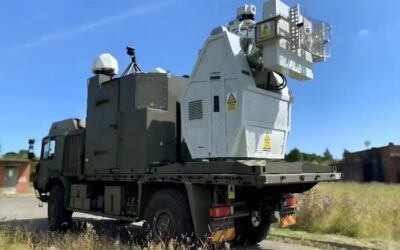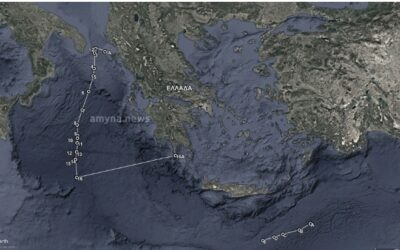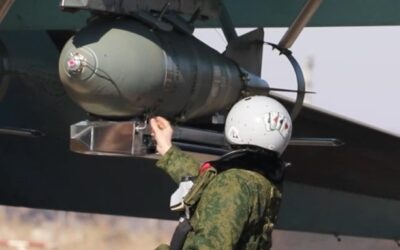Although the defence, security, and protection of the territorial integrity and independence of the member states of the European Union (EU) remain primarily…
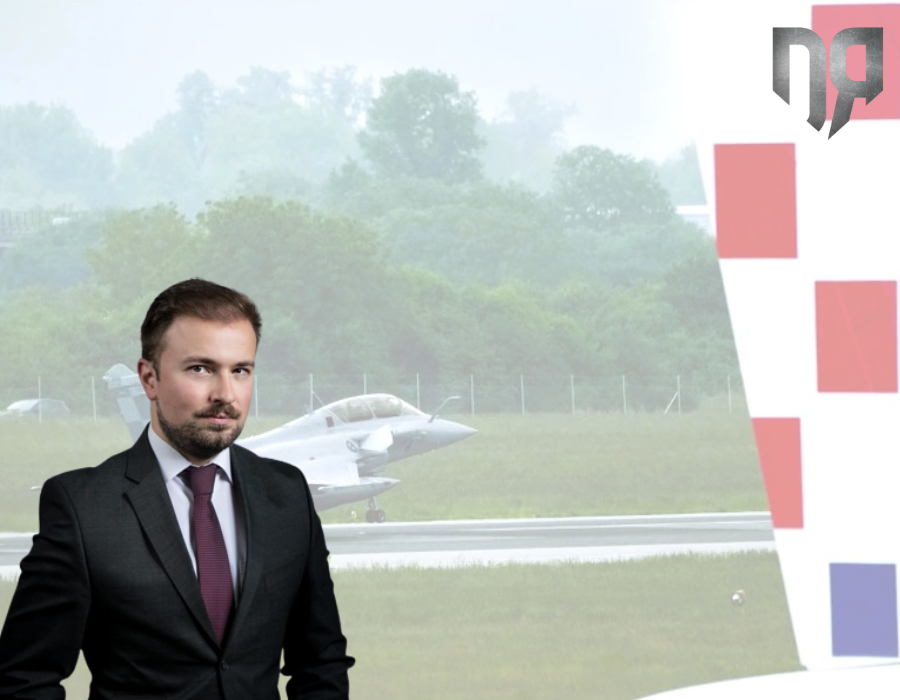
*Ioannnis Sidiropoulos
It has only been a few months since Croatia started receiving the first of the Rafale fighter jets it ordered from France.
The French aircraft, despite a rocky start, has now surged in global defence markets, with hundreds of orders recorded by its manufacturer, Dassault. This development did not escape the notice of Croatia’s old rival, Serbia.
Following the breakup of the former federation and the 1990s war culminating in the 1999 NATO intervention for Kosovo (with French participation), Serbia refrained from affiliating with the EU, accusing it of favoritism toward its past regional rivals turned EU member states, and instead further strengthened ties with Russia, also receiving arms from that country.
However, shifts began occurring after Russia’s invasion of Ukraine and the resulting sanctions. Serbia faced increasing difficulties with its trade agreements with Russia (even if the country does not take part in the imposition of the sanctions) and procuring materials to service and upgrade its MiG-29 fighter jets among other weapon systems. Given these challenges, modern Serbian leadership expressed interest in procuring the Dassault Rafale.
Yet, despite the recent seemingly cordial bilateral meeting, France has been hesitant to proceed with such a sale. The contentious issue of Kosovo’s status is a crucial factor, and France’s reluctance to sell air-to-air Meteor missiles to Serbia, as it is not a NATO member, also plays a significant role. While acknowledging the importance of these factors, this article explores an additional explanation for this problematic approach: the bitter history of defence procurement programs between the two countries.
Also read: 332nd Squadron “Falcon” | Rafales to replace the Mirage 2000s – Photos & VIDEO
Background
Post-war Yugoslavia (Socialist Federal Republic of Yugoslavia (SFRJ)), under the firm leadership of Josip Broz Tito, was a socialist country with an economic model nominally communist but featuring several unique elements that labelled the nation’s political and economic system as “Titoism.” This stance during the Cold War era aligned Yugoslavia with the non-aligned movement following the 1948 Tito-Stalin split.
To support its independent stance, SFRJ developed notable capabilities in its defence industry, manufacturing various military equipment, with the notable exception of air superiority jets.
1960: First Major Yugoslav Air Force Procurement
During the 1950s, Yugoslavia cultivated close ties with the USA, participating in the Mutual Defence Aid Program (MDAP), which provided arms and equipment. However, post-MDAP, Yugoslavia sought commercial avenues to equip its Air Force, devising a growth plan for 1959-1966 aiming for 80 Mach 2-capable fighter jets.
Despite its communist stance, Yugoslavia’s Air Force leadership favored the French-made Dassault Mirage IIIC, even considering local production. However, due to the ongoing Liberation War in Algeria and Yugoslavia’s support for the Algerian National Liberation Front (FLN), relations with Paris soured, leading to the cancellation of the Mirage III order. This marked the first bitter turn in their relationship.
Turning to the USSR, Yugoslavia explored new fighter options of this origin. A 1960 official visit to Moscow paved the way for a trade agreement spanning 1961-1966, allocating $34 million for Air Force purchases. Opting for a modern supersonic fighter-interceptor, they settled on the MiG-21, approving its purchase and licensing for production in 1961.
Also read: Serbia | In talks to buy French Rafale fighter jets and Turkish UCAV Bayraktar TB2
25 years later; the MiG-29 – Mirage-2000 Story
Fast forward 25 years, Yugoslavia faced the need for an interim, albeit modern, fighter bridging the gap between the aging MiG-21 and a domestically developed next-gen aircraft, then supposed to enter service not earlier that the late 90s. Options like the US F-16 and F-20, the French Mirage-2000, and the Soviet MiG-29 were considered. The MiG-21 belonged to the second generation of fighter jets, while the MiG-29 represented the fourth one, signalling a technological leap forward.
In December 1985, Yugoslav delegates assessed the latter in the USSR. The Soviets insisted that its radar system was comparable to those on the Mirage-2000 and F-16. In July 1986, Yugoslavia decided to acquire 14 MiG-29 aircraft, with the official position being that the choice was made on the merits of technological prowess and lower pricing.
However, the rationale behind this was rather different. Even if the MiG-29 was cheaper in price, the real aircraft of choice of the Yugoslav Air Force was the Mirage 2000. The problem was that the French offered the Yugoslavs a downgraded export version of the aircraft, the Mirage 2000E, with inferior avionics / radar / sensors compared to the standard designation. This happened for two reasons; first, the Hellenic Air Force had already ordered the latter.
Greece, a NATO country, had long been (and continues to be) a stable and valuable ally for France in the region and despite a détente, there was the name-related problem of the then Socialist Federal Republic of Macedonia creating frictions between Greece and SFRJ.
Moreover, during the late 80s Yugoslavia was a politically unstable country with obscure alliances (i.e. Libya’s Gaddafi) and the French were concerned about the possible use of their state-of-the-art jet in Yugoslav hands. SFRJ did not manage to persuade France otherwise, despite even threats to cut them off from other bilateral industrial cooperations, and the deal did not come to fruition. This was the second bitter experience between the two countries in the arms sector.
Also read: France | First Rafale F4.1 fighter aircraft reaches initial operational capability
Late 80s; the Novi Avion
As mentioned above, Yugoslavia had been developing a domestic supersonic fighter jet, the Novi Avion (Serbian Cyrillic: Нови Aвион English: New Aeroplane), for some time then. The aim was to replace all MiG-21 jets in the Yugoslav register.
The plan was to have the first test flight completed during 1992 and the official introduction in service achieved by the late 90s. In the context of a wider bilateral R&D agreement, the French aviation industry Dassault offered technical assistance in the project and invested to a considerable extent in relation to developing relevant technology (controlled and approved by the French government). It also funded the development of facilities in the factories of the Yugoslav manufacturer, SOKO.
SFRJ had already approached various prospective customer states and had received solid promises for orders. The French were also promised investment paybacks. The eruption of the Yugoslav civil war in 1991 meant the cancellation of the project which was very close to the completion of the prototype, due to lack of funds. The French were furious, but there was not much they could do.
And that was the final negative part of the SFRJ-France defence deals approaches. The next time the Yugoslav/Serbs would see French jets, would be through the opticals of their anti-aircraft gun batteries, during the French participation in the no-fly zones over Bosnia in the 90s wars.
Conclusion
While not of primary importance for today’s decisions, these past experiences linger in the collective memory of decision-makers in Paris. Senior officers of the French Air Force and the DGA (French armaments division) may recall the challenges posed by divergent strategic predispositions between the two countries (particularly the ones experienced in the 80s).
Overcoming distrust to strike a significant aviation deal between these European countries could have broader implications not only for Serbia’s future but also for the peace in the Western Balkans, the survival of democratic institutions in Eastern Europe, and even for the road ahead for the EU itself, concerning its External and Defence policy and relations.
*Lawyer, LL.M, Non-Resident Fellow at the Diplomatic Academy of the University of Nicosia
**The views and/or comments expressed in the articles belong to each author and may not constitute an opinion and/or position and/or be adopted as is by the company and/or the site administrators. More in the terms of use of the website.
READ MORE
The obscure files of an anniversary or David vs Goliath: The Serbian Air Force against the 1999 NATO ‘Allied Force’ Operation
The 1999 NATO intervention in the Federal Republic of Yugoslavia (FRY) marked a significant turning point in post-Cold War military operations…
The role of SERIOUS GAMES in the development of skills on Defense Standards
In an increasingly complex world, one vital factor for any successful organization is continuous capability building.
Britain | Defence Agreement with the EU Just Around the Corner
Talks between London and Brussels on a new strategic defence deal are reportedly at an advanced stage, with British Prime Minister Keir Starmer…
UK | Trial of New RF Weapon That Downs Over 100 Drones
At the Air Defence Range in Manorbier, West Wales, the British Army has completed the most extensive trials to date of a Radiofrequency Directed…
Saronic | Acquisition of Gulf Craft Shipyard and Launch of New mUSV Marauder
Saronic has recently announced the acquisition of Gulf Craft, a Louisiana-based shipbuilder, as part of its strategy to accelerate growth…
USA – Iran | Third Round of Nuclear Talks Next Week
Iran and the United States have agreed to assign teams of experts to begin drafting a framework for a possible nuclear deal…
Greece | Declaration of EEZ in the Ionian Sea and Presentation of Maritime Spatial Map
In an initiative with significant geopolitical and economic implications, Greece has declared an Exclusive Economic Zone (EEZ) in the Ionian Sea…
Lima | Ukraine’s Game-Changing Jammer Against Russian Glide Bombs
Ukraine has deployed a new electronic warfare system that is reshaping the dynamics of aerial combat on the battlefield.











